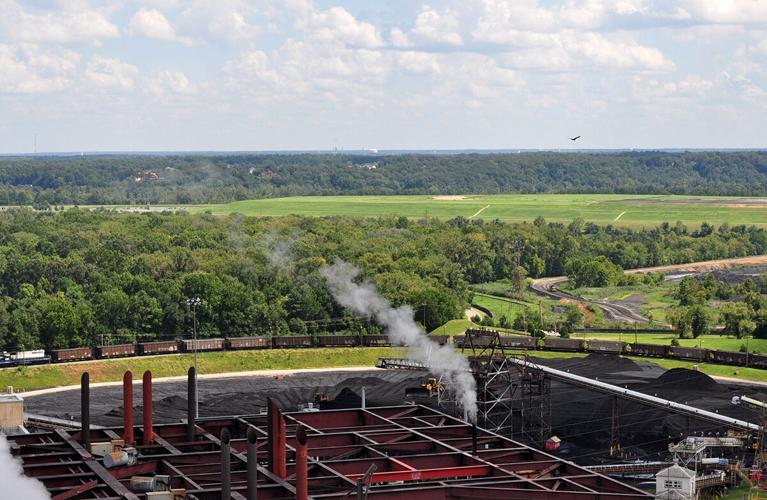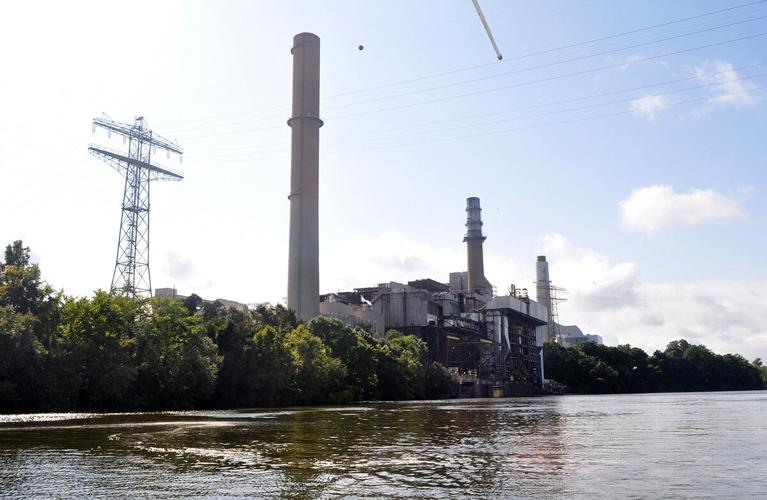A researcher has found contaminants associated with coal ash present in another Virginia waterway, this time the James River, near a site where the waste product has long been stored in the ground.
Tyler Frankel, an associate professor of environmental science at the University of Mary Washington in Fredericksburg, began testing waters near coal ash storage sites a few years ago to help fill gaps in the data, he said. An aquatic toxicologist, he wanted to understand whether elevated levels of trace metals associated with coal ash might be found in the sediment or fish of nearby rivers, even if they are no longer present in the surface water.
In 2023, Frankel published a study that found contaminants associated with coal ash in Quantico Creek near the Possum Point Power Station in Dumfries, Virginia, where the waste product was stored in clay-lined pits near the Potomac River. He wanted to learn if this was an isolated incident or if waterways near other coal ash storage sites in the state might also contain such contaminants.
A subsequent study, published early this year in Environmental Toxicology and Chemistry, reported elevated concentrations of some heavy metals in the sediment of the James River near Dominion Energy’s Chesterfield Power Station.
The study did not confirm a cause-and-effect relationship between the coal ash pits and the presence of those contaminants. However, it did highlight “the potential localized impact of coal ash” on the surrounding environment. Other studies have shown that trace metals can have harmful effects on aquatic ecosystems and human health.
“Because coal-based power plants continue to fulfill the energy needs of most communities globally … this study highlights the need for additional efforts to understand and address the impacts of coal ash … on aquatic ecosystems,” Frankel writes.
Dominion spokesman Jeremy Slayton called the study “incomplete,” saying it “fails to acknowledge historical and current land uses in this area of the James River and their impacts.”
“The report makes an inconclusive connection between metals concentrations in sediment and coal ash storage at Chesterfield Power Station contrary to years of data publicly available,” Slayton wrote in an email.
Following state law, Dominion is in the process of permanently closing the unlined pits that have long stored ash at Chesterfield and other power stations along rivers in the region. Since it was built in 1952, the Chesterfield station has generated an estimated 15 million cubic yards of coal ash.

About 7 million cubic yards, or just under half of the total, will be transported offsite to be recycled into new materials, as required by a 2019 Virginia law. The other half of the coal ash will be permanently stored in a synthetic-lined landfill at the Chesterfield site. The plant is south of Richmond along the banks of snake-like curves of the James River, near the Dutch Gap Conservation Area in Chesterfield County.
Once the largest power plant in Virginia, the Chesterfield station shut down its last two coal-fired units in May 2023.
Groundwater monitoring is required as part of the closure of the previously unlined or clay-lined pits from which ash is being removed. Monitoring by a third-party contractor so far has indicated elevated levels of certain heavy metals in the groundwater around the ash pits.
In 2023 and 2024, the monitoring effort at Chesterfield revealed “statistically significant” exceedances of the state’s groundwater protection standards for coal ash, or “coal combustion residuals,” specifically for arsenic, cobalt and lead. Other elements, such as cadmium, were present in groundwater at levels elevated above a comparative background sample.
Frankel’s study did not find significant increases in heavy metals in the surface waters of the James River, compared with what was present upstream of the power plant. (The study area was a little more than 10 miles downstream from the Richmond city limits.) But Frankel did find elevated concentrations of a handful of heavy metals in river sediment samples collected from the mainstem of the James River not far from the plant.
Those samples indicated elevated concentrations of aluminum, arsenic, cadmium, chromium, iron, lead and zinc. Some of those elements were found in elevated amounts both upstream and downstream of the plant as well, but levels of cadmium and lead, for example, exhibited high enrichment rates adjacent to the power station, compared with upstream and downstream samples.
The presence of trace metals, particularly in sediments, the study said, “poses a significant environmental threat as they can remobilize back into the water column and are persistent.” The study also used environmental DNA to identify 22 species of fish that frequent the sample area, including species that have been identified as vulnerable or endangered.
Environmental groups have long advocated for energy companies to move coal ash stored at unlined pits either to lined landfills or to places where it can be recycled into concrete or other materials. Virginia has passed laws requiring such measures. But it’s not clear what remediation might be required following evidence that groundwater surrounding the pits had already been contaminated.
This story first appeared at bayjournal.com on April 16, 2025.




